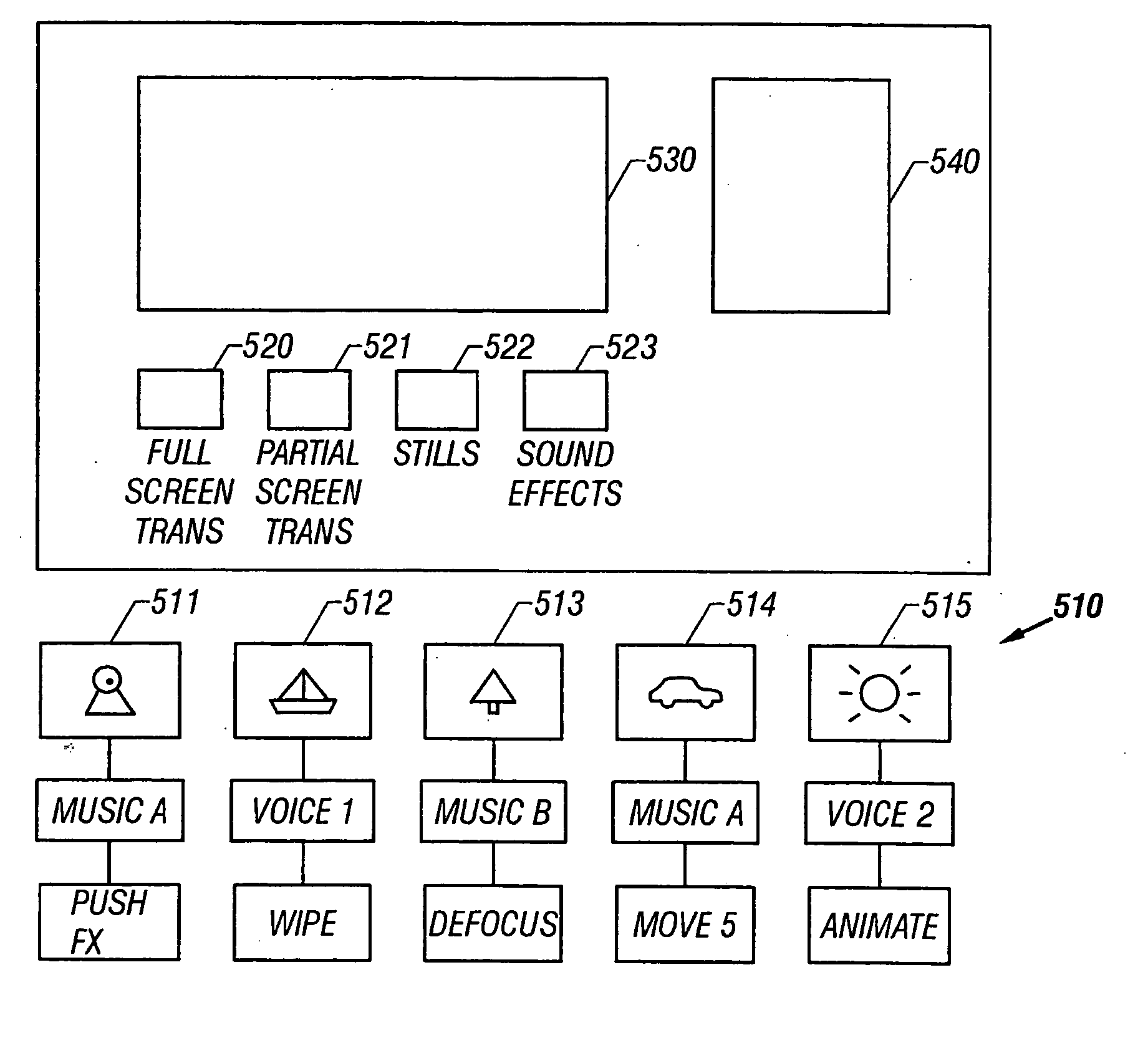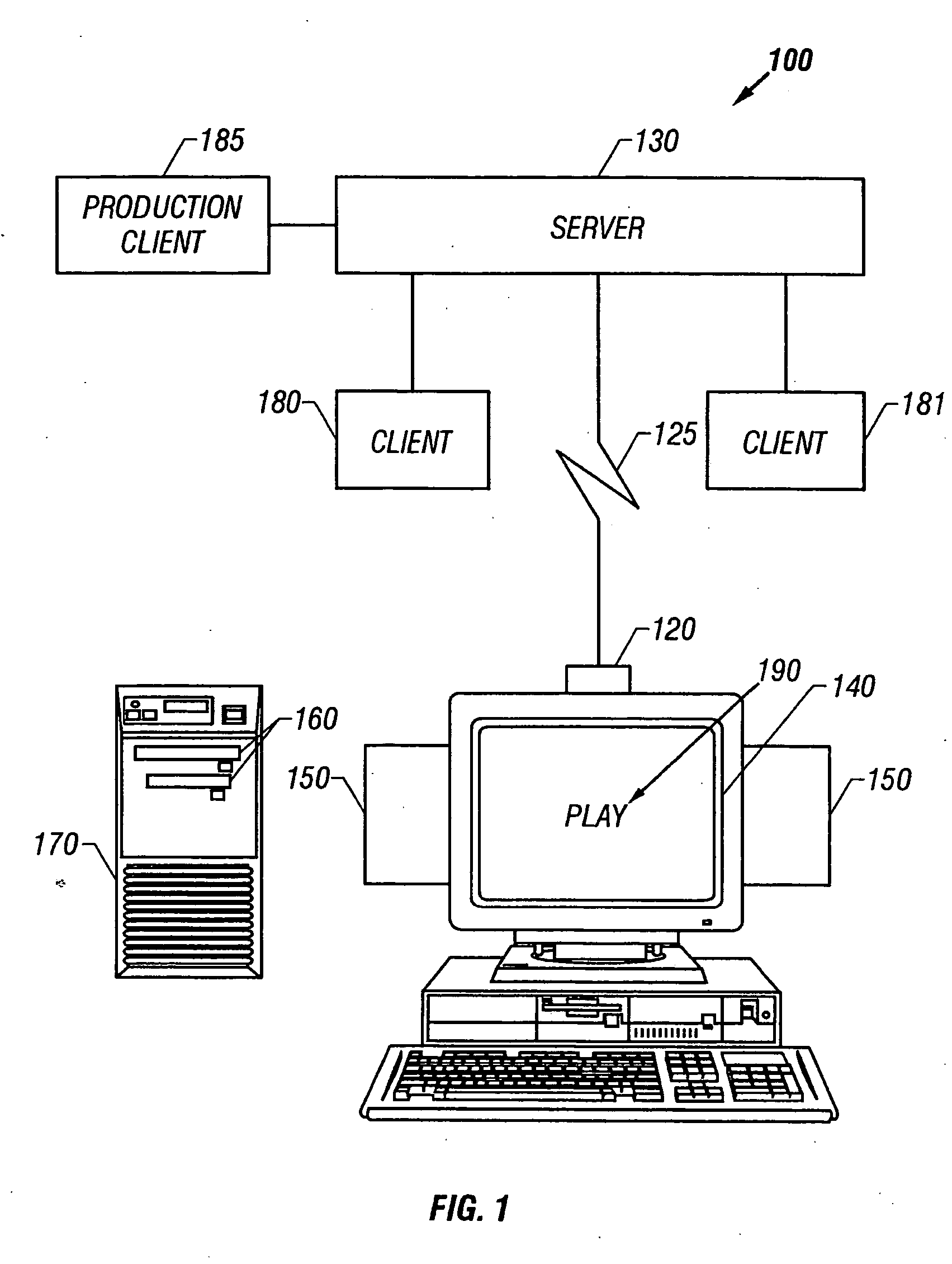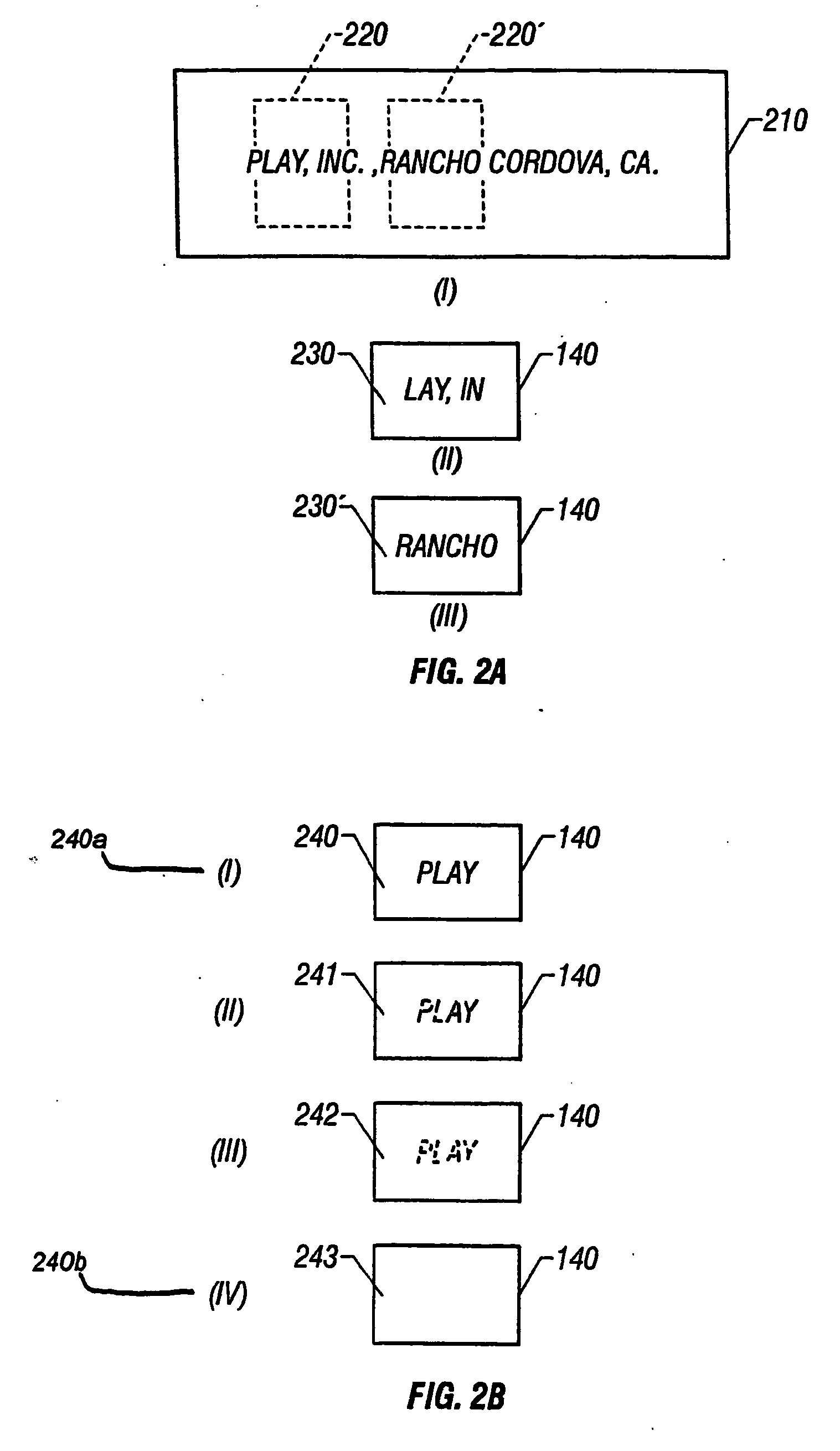Low bandwidth television
a television and low bandwidth technology, applied in the field of image processing, can solve the problems of low bandwidth, non-continuous, packet-switching data, and common limiting factor of sending real-time data, and achieve the effects of low bandwidth, low bandwidth, and relatively rapid transmission of still pictures, audio data and scripts
- Summary
- Abstract
- Description
- Claims
- Application Information
AI Technical Summary
Benefits of technology
Problems solved by technology
Method used
Image
Examples
Embodiment Construction
[0025]FIG. 1 shows a general overview of a client / server architecture of the present invention. Client personal computer 100 is connected through modem 120 and network 125 to server 130. Computer 100 includes display screen 140, stereo speakers 150, disk drives 160, and hard drive 170 containing a number of software modules. Server 130 has a memory containing other software modules, and server 130 is connected to a plurality of other clients 180, 181 and also to a production client 185. Production client 185 authors production images 190 shown on display 140 of personal computer 100 as well as providing a director module for one-time plug-in at client computer 100.
[0026] FIGS. 2(a) to 2(d) show selected “moves” characteristic of the low bandwidth television of the present invention. FIG. 2(a) shows a flying video plane. A still picture 210 of an image to be displayed on computer screen 140 resides in the personal computer (FIG. 2(a)(i)). Images 230, 230′ of picture 210 are displaye...
PUM
| Property | Measurement | Unit |
|---|---|---|
| speed | aaaaa | aaaaa |
| width | aaaaa | aaaaa |
| processor speeds | aaaaa | aaaaa |
Abstract
Description
Claims
Application Information
 Login to View More
Login to View More - R&D
- Intellectual Property
- Life Sciences
- Materials
- Tech Scout
- Unparalleled Data Quality
- Higher Quality Content
- 60% Fewer Hallucinations
Browse by: Latest US Patents, China's latest patents, Technical Efficacy Thesaurus, Application Domain, Technology Topic, Popular Technical Reports.
© 2025 PatSnap. All rights reserved.Legal|Privacy policy|Modern Slavery Act Transparency Statement|Sitemap|About US| Contact US: help@patsnap.com



